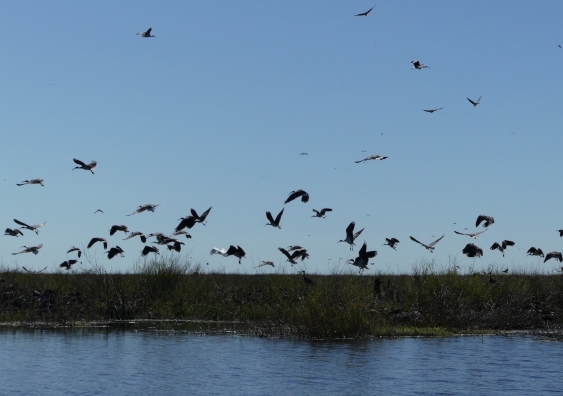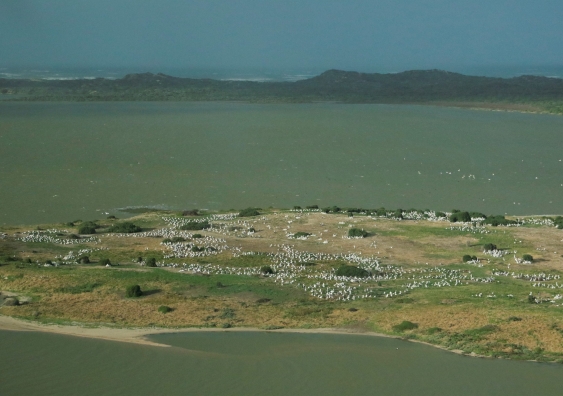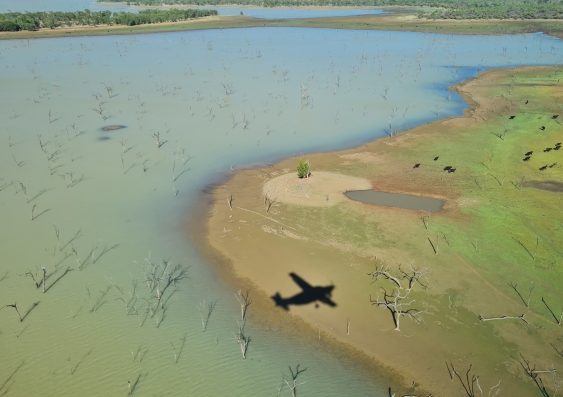Following the wet La NiÃąa years with widespread flooding, drier conditions have resulted in a drop in waterbird numbers and breeding in 2024.
ąŦą·ģ§°Ââs annual waterbird survey, conducted by researchers and government collaborators, has observed fewer waterbirds breeding and a drop of nearly 50% in overall numbers, compared with 2023.
The researchers spotted 287,231 birds in this yearâs survey, down from 579,641 birds in 2023, ranking this year approximately in the middle of the 42 years the survey has been running.
The survey, led by ąŦą·ģ§°Ââs Centre for Ecosystem Science with major NSW government partner the Department of Climate Change, Energy, the Environment and Water (DCCEEW) and other Australian state government agencies, covers a third of the continent and provides one of Australiaâs most important long-term datasets on the health and biodiversity of the countryâs river and wetland areas. The survey also comprehensively covers the major rivers and wetlands of the Murray-Darling Basin.
âWe know that when it starts to dry up, the floodplains dry up and waterbirds do not have the food to breed in large numbers, so they concentrate on remaining lakes and swamps, which is what we saw this year,â says ąŦą·ģ§°Ââs Professor Richard Kingsford, Centre for Ecosystem Science Director, who leads the aerial surveys.
This yearâs data on overall numbers, number of species breeding and wetland area â three of the four major markers of waterbird health â have also continued to show significant long-term declines over time.
âWe had a good bounce in numbers after good breeding in the flood years of 2021 and 2022, but numbers have now dipped below the long-term average again, with little breeding in 2023 and 2024,â Prof. Kingsford says.Â
Media enquiries
For enquiries about this story and to arrange interviews, please contact Isabelle Dubach.
°Õąðąô:Ėý+ 61Â 432 307 244
·Ąģūēđūąąô:Ėýi.dubach@unsw.edu.au
The scientists found waterbirds were most abundant in the temporary wetlands of the Georgina-Diamantina River system in northwestern Queensland, with Lakes Mumbleberry and Torquinnie supporting more than 50,000 waterbirds â 17% of all birds observed this year. Lakes Cawndilla and Menindee were shallow and drying and supported large numbers of waterbirds (>24,000), as did the nearby shallow Talyawalka Lakes system (>13,000 birds).
Increasing dry
Drier conditions have continued to develop over eastern Australia, exacerbated by higher temperatures in the context of climate change. This is contributing to a faster drying out of wetlands.Â
Reflecting the drying of eastern Australia, this yearâs wetland area index â the total area of wetlands â was 122,283 hectares, also decreased considerably from the previous flood year of 2022, and coming in well below the long-term average.
âIn the south-east of Australia, there has been a decrease in April to October rainfall of around 9% since 1994, and more frequent periods of below average rainfall,â Prof. Kingsford says.
âThis has meant decreasing stream flows at most gauges across Australia since 1970, particularly in the Murray-Darling Basin, as recorded by CSIRO this year.â
For example, combined capacity of water storages in the MurrayâDarling Basin were 77% full, compared to less than 92% at the end of October last year. Menindee Lakes storages were about 55% full, down from 75% last year.
âThese drier conditions always affect breeding of waterbirds,â says the surveyâs co-ordinator, Dr John Porter, DCCEEW Senior Scientist.
âOver the whole survey, we only recorded a few rookeries, mainly cattle egrets and Australian white ibis, less than last year and continuing to decline below the long-term average.â
The annual survey is run by ąŦą·ģ§°Ââs Centre for Ecosystem Science and is supported by resourcing and funding from DCCEEW, with additional funding provided by the South Australian Department of Environment, Water and Natural Resources, the Queensland Department of the Environment, Tourism, Science, and Innovation, the Victorian Department of Environment, Land, Water & Planning, and the Victorian Game Management Authority.








